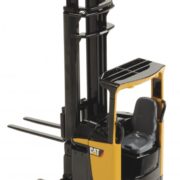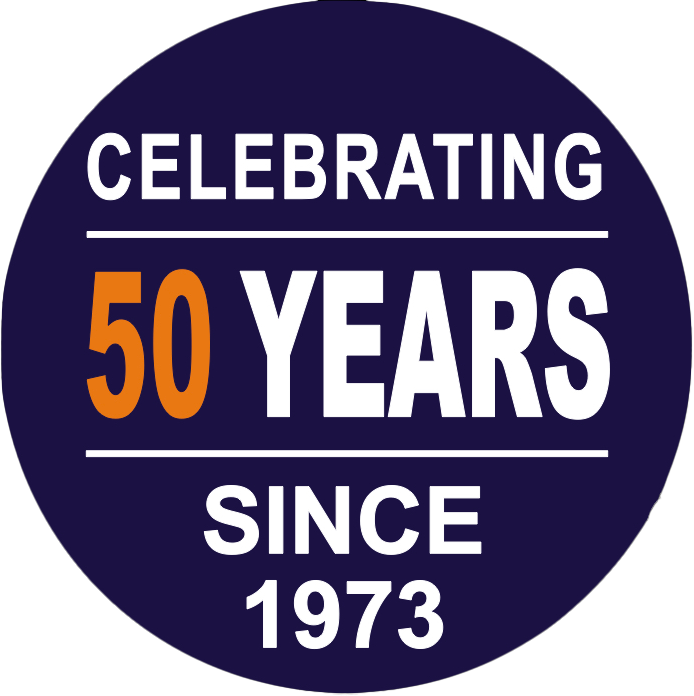The complete guide to Forklift Reach Trucks and how they can help in your business
While manufacturing, agriculture and the importing and exporting sectors have always required masses of warehouse storage space, the steady rise of online shopping is increasing demand for large storage spaces year on year.
Despite the clear growing demand from many companies for more square footage to store goods, it can prove difficult as land expansion can require high levels of capital investment, and some businesses are simply land-locked and would require relocation to increase space for their products.
The forklift truck industry has been quick to cater to this trend by developing various different types of advanced commercial reach trucks which enable operators to reach items sitting on shelves many metres in the air.
Furthermore, these reach trucks have been designed to have as narrow a body as possible without compromising on navigation or stability. This gives the vehicle a very short turning radius compared with a traditional forklift, so it can be made to move easily in a small space. This means that companies are now able to expand their storage both upwards, stacking shelves ever higher to use the empty space that usually sits above their goods, and on the ground, filling up their warehouses with more aisles of goods packed closer together with narrower spaces in between. These vehicles have contributed greatly to increasing efficiency for companies all over the globe.
What is a forklift reach truck?
In short, forklift reach trucks are a kind of truck designed for reaching objects from high shelves in a narrow space. They’re most commonly used in warehouses where items are stacked up high on shelves without much room to manoeuvre around them. In that sense, they are made to reach places where other forklift trucks cannot.
What are the features of a forklift reach truck?
Standard counterbalance forklifts are generally between 4 and 7 ft wide and 8 and 10 ft long and require around 13 ft of space between shelves to safely navigate and move pallets. Narrow aisle forklift trucks on the other hand, such as side loaders and walkie stackers, can be less than 5ft wide and need much narrower aisles to manoeuvre and move items.
Designed to fit in much smaller spaces than standard counterbalance forklifts, reach trucks have a much more compact shape. While the narrow base and long reach might make reach trucks appear unbalanced, they are carefully designed and constructed in a way that balances the load they carry, with two legs and a set of one or two small wheels on the back legs, underneath where the operator sits or stands, which keeps the vehicle stable.
With this narrow body, the trucks have an extremely tight radius when turning, which allows them to be manoeuvred into small spaces while achieving maximum reach height. When the operator is ready to move a load, it is moved backwards to sit within the wheelbase, ensuring the load is not sticking out. This enables the operator to move the truck without knocking things off the other shelves around it.
The truck moves by turning at a right angle to the shelving, to get up close and then use a scissor mechanism, called a pantograph, to allow the forks and the load to move back and forth, to reach into shelves and pick up items.
What types of reach trucks are available?
While all reach trucks are designed to be able to lift and manoeuvre goods at a great height, there are different types of reach truck which make them suitable for different warehouse scenarios.
Stand-up trucks
Stand-up trucks are the most popular types of reach trucks and are commonly used where there will be only one load per bay. They have two forks on the front which slide under pallets to lift them and transport them elsewhere.
Double-deep or deep-reach trucks
While similar to stand-up trucks, double-deep trucks have longer forks to allow them to operate successfully in places storing loads in multiple pallets in each bay, as they can reach far enough to the back of the bay.
Straddle trucks
The types of reach trucks also have long forks which enables them to slide under a load, plus they are built to be able to grip the edges of the load for greater stability and increased ease of access. These are perfect for areas with numerous loads in a bay which you can reach from different angles, as these straddle trucks can grab the loads sitting further back.
Steering options
Many reach trucks offer both a 360° and 180° steering system and let the driver choose their optimum operating conditions. Each kind of steering has its advantages – 360° steering places less strain on the wrists, arms and shoulders while giving the operator the ability to change direction without reducing speed, which ensures great manoeuvrability in small spaces.
Visibility options
With many different goods picked so high from where the operator is positioned, seeing exactly what is going on could be an issue from the ground, so reach trucks come with a number of different options for improving visibility when in operation. Most are designed to allow a good upward view of the forks, plus an overhead guard and forward view protector which both help to enhance viewing.
Some come with a glass roof to allow greater visibility. The most advanced have a camera system, with a camera attached to the fork carriage, which relays signals to a display panel which is positioned in the operator’s view.
This helps ensure they are picking up exactly the right item.
Hydraulic controls
Reach trucks that come with simultaneous hydraulic control gives the operator a full range of movements, allowing them to lift loads, reach and side-shift all at the same time, boosting efficiency, and increasing productivity by reducing the time needed for each task.
Can reach trucks be used outside?
Reach trucks are mainly made for warehouse use and are not suitable for outdoor work. They are built low, with little under-carriage clearance, which can cause problems if used on uneven surfaces often found outside. An uneven surface can also cause knocks against the machinery which, if they occur repeatedly, can damage the electrical systems inside and lead to expensive repairs, which is another reason to keep them for indoor use.
What are the benefits of reach trucks?
They can reach high places
Aptly named, reach trucks are able to stretch the fork carriage far beyond their stabilising body, up to nine metres, enabling them to be used to reach further into high shelves or racks to collect items.
They can operate in small spaces
Warehouses are commonly packed until they’re full in order to use the space as efficiently as possible. However, this can cause problems if items need to be retrieved quickly from hard to reach places. Reach trucks can get to these packed away items with little fuss, even in extremely tight spaces, or at extreme heights far above what other types of forklift can manage.
They allow for more storage
Using reach trucks in a warehouse greatly expands the available space for storage without having to increase the actual square footage. Stacking items upwards using rack storage means you can fit more in and reach trucks ensure you can reach those items quickly, giving you much better value for money for your space.
No need for counterbalance weights
Forklift reach trucks are properly designed so their stabilising legs do all the balancing work, and no extra counterbalance weights are necessary.
They increase efficiency
Reach trucks are perfectly designed to work in areas of high-density storage where there is a need to pick up and transport goods quickly, which makes them ideal for boosting efficiency in a warehouse.
They are cheap to run
Reach trucks are extremely efficient in that they don’t need much fuel to run, and are designed to have low operating costs with minimal maintenance required. This means that after your initial outlay on the truck, costs are kept down.
They are easy to operate
The side-seat position gives the operator a clearer view of the forks than would be achieved otherwise. Some forklift reach trucks have a tilted cab mechanism which makes viewing easier, and others are fitted with open overhead guards as a solution.
They are quiet
Warehouses can be very noisy places, and workplace noise can disrupt the flow of work and require special equipment to protect workers. Reach trucks are electric which makes them relatively quiet, and many include mast technology to reduce operating noise even further, minimising disruption.
What industries, warehouses and sites are reach trucks good for?
Reach trucks are usually the best option for indoor working environments where high density of storage and quick retrieval of items are the main priorities. This is due to their narrow chassis, which means they are perfect for functioning in narrow aisles, plus their moving mast is specially designed for pallet storage.
Warehouses that employ selective pallet racking for storage, which is one pallet deep with a maximum of two racks placed back-to-back and the most common system of warehouse racking, require reach trucks to access the higher shelving. Reducing aisle width can massively increase storage capacity when using selective racking, which can be as little as 35% or reach up to 75% with the right choice of forklift reach truck.
Similar to selective racking, double deep racking instead stores pallets two rows deep, rather than one. Forklift reach trucks can be ideal for this kind of racking equipment and as such is most commonly chosen for warehouse storage systems like this.
Find the right reach truck for your business
Now you know more about the different options and benefits of these kinds of trucks, you can probably see how hiring or purchasing a forklift reach truck could maximise storage capacity, enhance your business practices and increase productivity.
Get in touch to chat about how reach trucks can help your business and which ones could best suit your needs.

